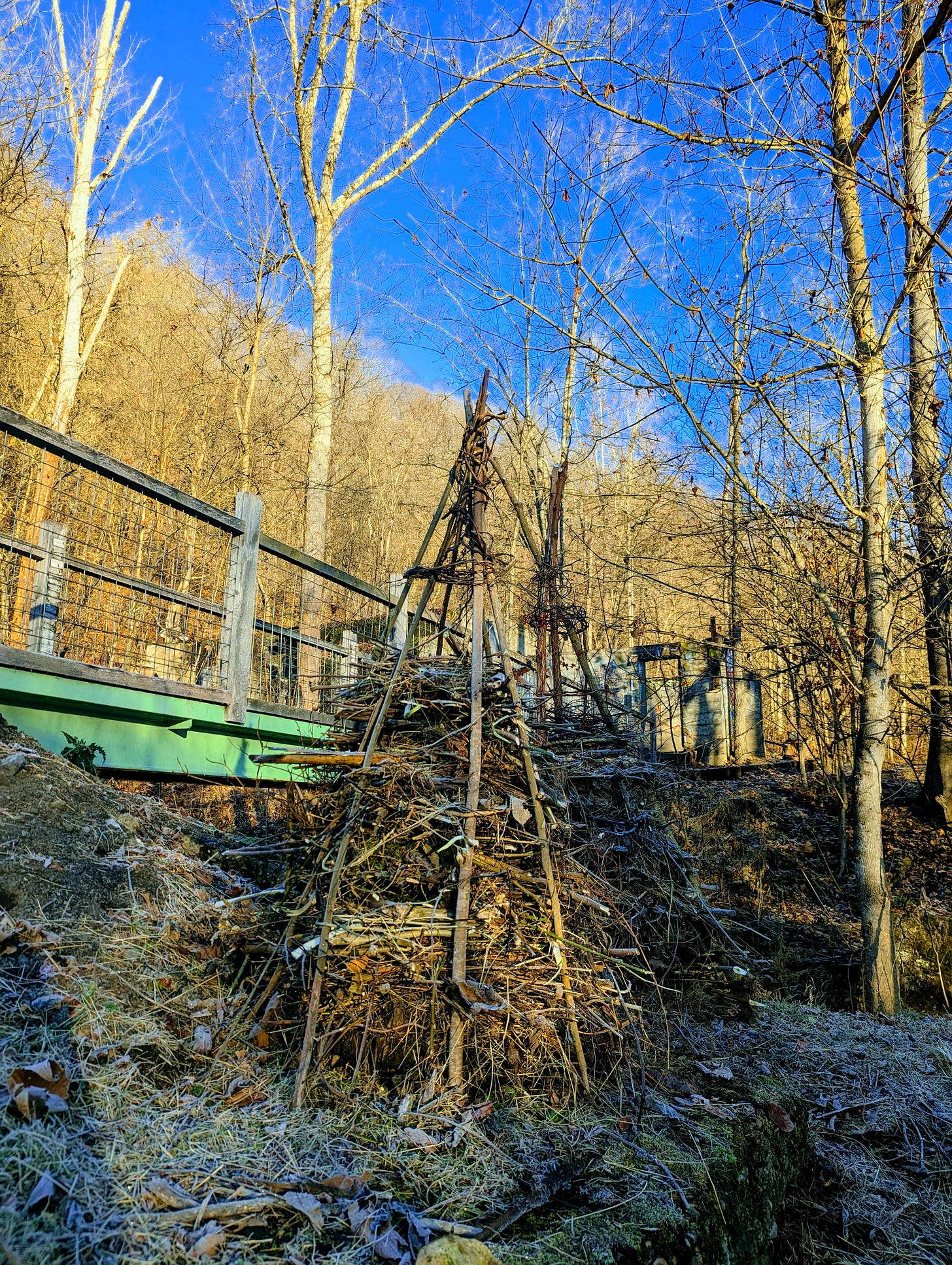Before you snuggle into reading this one, a few, couple reminders in case you missed them.
We had a ball with the Mosaic Arts Online Event on Sunday. You can watch it at your leisure now. Six artists, in their studios, demonstrating how to do specialized things. My personal favorite was holding my breath as Arianna Gallo of Koko Mosaico fame carefully poured the liquid, self-leveling cement around the interstices of her 24karat gold stars. That girl has a steady hand.
But you can watch me too. My demo is how to treat rusty metal as an Uncommon Canvas for your mosaic. The whole event adds up to two free hours of mosaic learning tasters. So worth it. You can watch it here.
The second reminder is about shopping Sager Mosaics this holiday season. The Rust Belts are being unveiled ten at a time. The second unveiling, with their accompanying discount coupon, can be discovered below. The paid subscribers get first crack at these, my most sought-after, affordable art series.
The bug snug: doing two things at once.
Clearing the brush, weeds, invasives, and noxious interlopers that threaten to engulf The Ruins every year.
Building uniquely beautiful things in the landscape. Things that make people take a second look and think…what a strange and wonderful thing.
What is in these first two bug snugs and how did we build them?
We started by cutting the odious trees of heaven trunks with my brand-new loppers. Tree of heaven is a particularly fast growing invasive that is a perfect width for the poles that hold the teepee shape of the bug snug together.
As I was announcing that I would have to head over to the studio for some twine to tie the tops together, Erika was already making do with bittersweet vine twine. She is a bottomless well of making something out of nothing.
As Blair cut and cleared, we quietly fell into a system of organized piles. The big poles, the medium twigs, dead weeds, grass, rotten logs, seed heads. It’s like a very messy lasagna recipe, but for bugs and creatures and future pollinators.
As we cleared brush towards Banning Run, the creek that runs under The Ruins Bridge, we came upon a long-ago forgotten beam from the coal mine. Robert thinks it was used as a ceiling joist. Ten feet long and we judge at least 500 pounds. When I said to him cheerfully, do you think we can pull it out of the ditch and turn it into a bench? he calmly gave me what has become his Rachel only asks for the very heaviest of things to be moved look. And walked away.
We go through this dance every time. I ask for too-ambitious help. Robert says no, and then goes off to figure out how to make it happen.
He returned with his new favorite tool, a winch that hooks onto his drill. Great for pulling canoes off of riverbanks and deer out of the woods. Two hours later, the beam had inched its way through the creek, up the vertical slope and into its new setting as the first official bench of The Ruins.
The next time you see our coal beam, you may be sitting on it.
We will use some of the smaller stones left over from building The Wandering Wall to raise it up for sitting height and stability.
A simple, but not easy, bench.
And now… The Rust Belt Reveals. A perk reserved for my paid subscribers.
Keep reading with a 7-day free trial
Subscribe to The Ruins Project to keep reading this post and get 7 days of free access to the full post archives.






